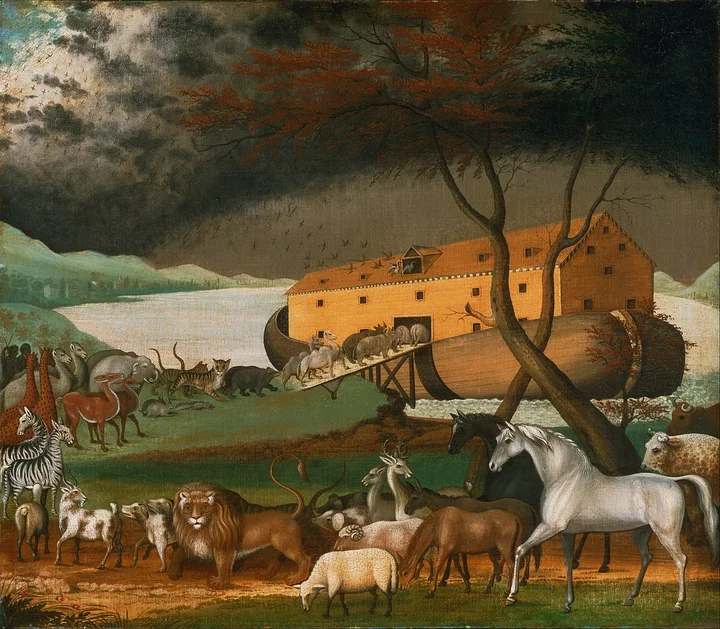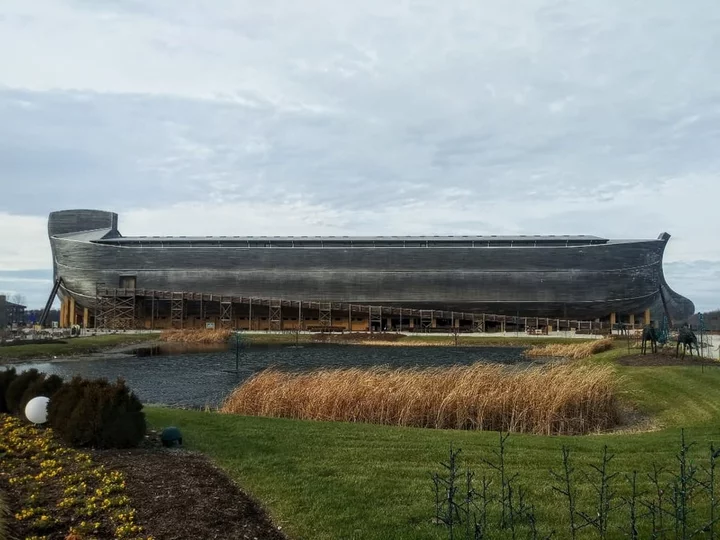“I don’t know of any expedition that ever went looking for the ark and didn’t find it.”
— Paul Zimansky, professor of archeology, Stony Brook University
###
In a book of weird tales — and the Bible is nothing if not a veritable cornucopia of very weird tales — the weirdest of all is the story of Noah’s ark. Forget that sexless birth thing, or Satan and God playing dice for Job’s soul, or raising of the dead, or the sun standing still in the sky. They’re all business-as-usual compared to Noah and his ark, for one simple reason: It begins with God — all-knowing, all-powerful, all-everything — saying, “I fucked up.”
Here He is, just ten generations in, having gotten the whole ball of wax rolling back in the Garden of Eden, realizing that it was all a mistake. His glorious creation, mankind, had morphed in no time at all into a mess of sinful ingrates. “And God saw that the wickedness of man was great in the earth…and the LORD said, I will destroy man whom I have created from the face of the earth.” Not just folks, either. Apparently the fruit of His other creations were similarly evil: “…both man, and beast, and the creeping thing, and the fowls of the air; for it repenteth me that I have made them.”
(I’m quoting from the King James Version because I went to school in England where Catholicism-lite, aka Church of England, wouldn’t have been seen dead with the Vulgate or any of those new-fangled translations.)
It takes a big man, and an even bigger God, to admit a mistake, but that’s the bottom line: I fucked up and you’re going to pay for it. All of you, men, women and babies, birds and fish, cats and dogs. And just killing you off quickly is too good for you, so a hard rain’s a-gonna fall and you’re gonna drown.
All except Noah, he’s cool, he’s 600 years old, after all. His family, too. (It doesn’t say if they also “found grace in the eyes of the LORD,” so best give them the benefit of the doubt.)
Painting by Edward Hicks (1780-1849), now in the Philadelphia Museum of Art (Public domain)
Sure enough, the rains came. “… all the fountains of the great deep broken up, and the windows of heaven were opened.” Everyone and everything drowned, other than Noah and his wife and his three sons and their wives, who emerged safe and sound after the ark grounded on Mount Ararat. Not much of a gene pool there, but it was even worse for the animals — they had to start over, once things got going again, with just one of each sex. (Don’t get me started about the dangers of incest.)
They survived because they were in an ark, of course, 300 x 50 x 30 if you were measuring in cubits. Along with two each of elephants and hippos and lions and camels and etcetera. And their feed, and their poop. No hanky-panky while they were in the ark, of course. (The Gnostic Hippolytus of Rome, who died in 235, explained that male and female animals were separated by sharp stakes.)
###
What’s interesting, given that the various ark stories were written down are hundreds of years apart, is the similarity of the deck areas. Noah’s ark, at 15,000 square cubits, is practically identical — within 4 percent — to the deck area of two previous arks built by earlier flood heroes. Atra-Hasis, who appears in the Sumerian king lists, built a circular ark with a deck area of 14,400 square cubits. While Utnapishtim, celebrated in the Epic of Gilgamesh as the king of Shuruppak, built a cubic ark, deck area also 14,400 square cubits.
So the writer(s) of the Genesis “flood” (chapters 6 thru 9) who put pen to paper — or rather, quill to papyrus — sometime after 500 BC, plagiarized from at least nine earlier Mesopotamian flood stories. Much earlier — the Epic of Gilgamesh goes back to at least 2100 BC. In it, the Sumerian God Enik, or Ea, commands Utnapishtim to demolish his house and build a boat to keep living beings alive before the flood arrives — it’s the Noah story practically word-for-word. (One intriguing theory is that the original flood story is actually a dim remembrance of a Black Sea flooding around 5600 BC, when the Mediterranean broke through a rocky sill in the Bosphorus channel, turning what had been a freshwater lake into a saline arm of the Med.)
Noah’s Ark Encounter “replica” in Williamstown, Kentucky. Kaleeb18, CC BY-SA 4.0, via Wikimedia Commons
And just in case you think that’s all long-gone ancient history/myth/legend, consider that at least a dozen expeditions, by my count, have searched for Noah’s ark in Turkey since 1948. That’s when the Associated Press reported that Kurdish villagers had discovered “a large, petrified wooden ship on Mount Ararat.” As recently as November 2019, Fox News reported the most recent discovery on its website under the headline “Noah’s Ark ‘Buried in Turkish Mountains’ as Experts say 3D Scans Will Prove Biblical Ship’s Existence.”
The science of arkeology is, apparently, alive and well.


CLICK TO MANAGE